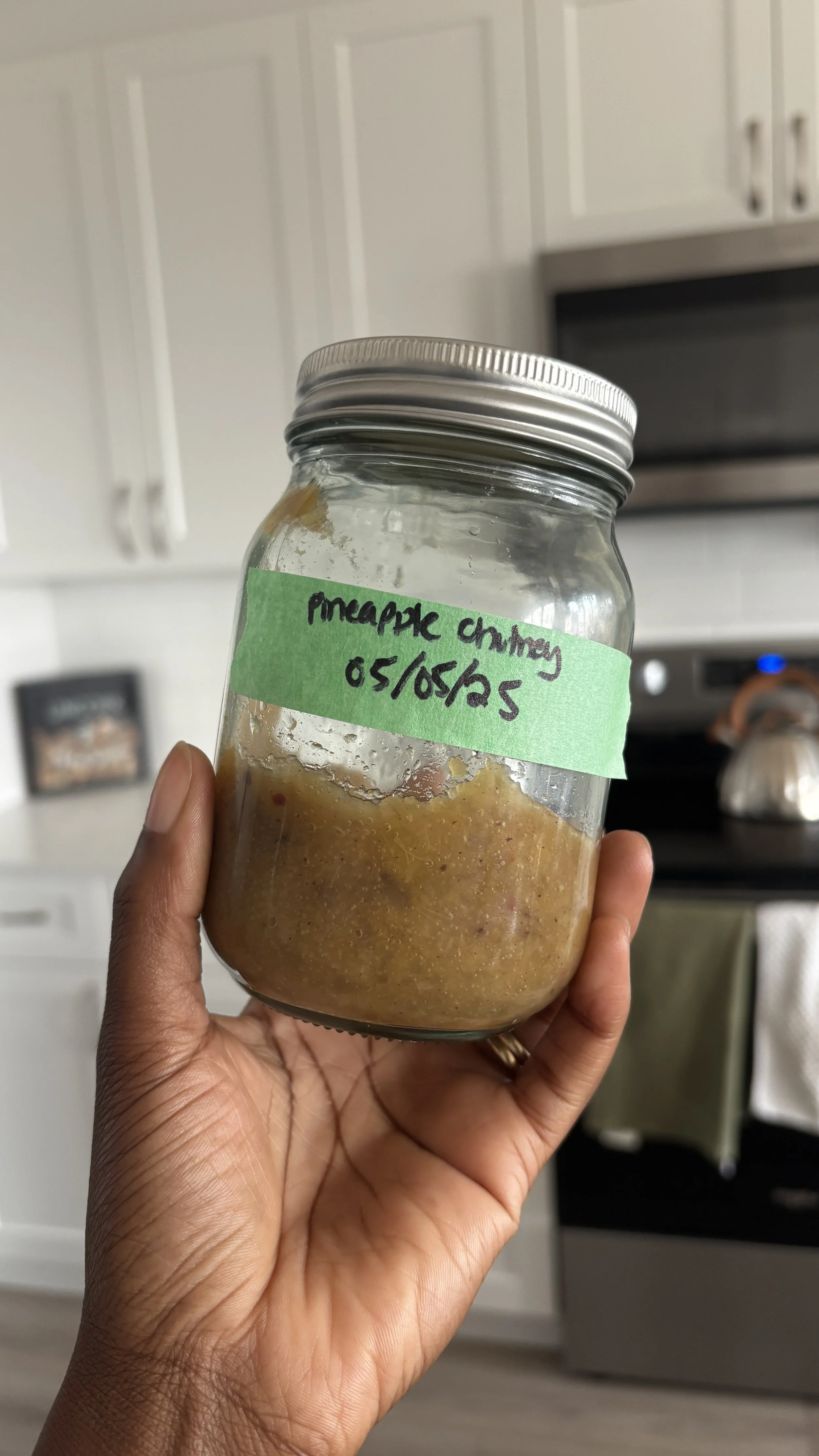Sweet & Spiced Pineapple Chutney (Made from Fermented Fruit Leftovers)
This chutney was born from one of my favorite kitchen rhythms: fermentation. After making a batch of fermented pineapple (like a tropical tepache), I was left with soft, tangy fruit pieces that still had so much flavour and life in them. Instead of tossing them, I turned them into this warm, spiced chutney.
It’s rich, earthy, and filled with heat, tang, and a hint of sweetness from the pineapple itself. I love this kind of recipe—low-waste, high-nourishment, and deeply rooted in the tradition of making the most of what you have.
What Is Chutney?
Chutney is a slow-cooked condiment that originated in the Indian subcontinent. The word chutney comes from the Hindi word chatni, meaning "to lick" or "to eat with relish." It was traditionally made to preserve seasonal fruits and vegetables by simmering them with spices, vinegar, and sometimes sweeteners like jaggery or honey.
In many healing traditions—especially Ayurveda—chutneys were used to balance digestion, awaken the palate, and bring harmony to a meal by combining the six tastes (sweet, sour, salty, bitter, pungent, and astringent). You’ll find chutneys across the African diaspora too—mango chutney, tamarind sauce, sorrel preserves—all meant to stretch the harvest and nourish through bold flavor.
The Energy of Chutney
Energetically, chutney is about transformation. It takes what might be discarded—scraps, overripened fruit, leftovers—and turns it into something sacred. In this version, made from fermented pineapple, you’re also preserving gut-loving probiotics and deepening the medicinal value.
It stimulates digestion, warms the body, and invites you to slow down, savor, and waste nothing. This chutney, like most things I make, is a ritual in itself—an offering to your womb, your roots, your rhythm.
Fermented Pineapple Chutney (Zero Waste, No Sugar)
Makes: 2–3 small jars
Prep Time: 5–10 minutes
Cook Time: 30–40 minutes
Storage: Keeps in fridge 1–2 weeks or freeze for up to 3 months
Ingredients:
~2 cups leftover fermented pineapple chunks or pulp (strained from your drink)
½ red onion, finely chopped
2–3 cloves garlic, minced
1 tbsp grated fresh ginger
2 tbsp apple cider vinegar (or some of your ferment brine)
½ tsp ground cinnamon
¼ tsp ground allspice
¼ tsp cayenne pepper (or to taste)
½ tsp sea salt
Juice of ½ a lime (optional, for extra brightness)
Drizzle of olive oil
Instructions:
In a saucepan, heat a small amount of olive oil over medium heat.
Add chopped onion and sauté for 2–3 minutes until soft.
Stir in garlic and ginger. Cook for another minute until fragrant.
Add the fermented pineapple, vinegar or brine, spices, and salt.
Simmer uncovered for 30–40 minutes, stirring occasionally, until thick and jammy. (Alternatively, you could blend it for a smoother texture)
Taste and adjust: add more lime, vinegar, or cayenne if needed.
Let cool slightly, then spoon into clean jars.
How to Store:
Keep refrigerated and use within 1–2 weeks.
Or freeze in small containers for up to 3 months.
Optional: add a thin layer of olive oil on top to help preserve freshness.
Ways to Use It:
Paired with grilled fish, chicken, or lentils
Spread on sourdough toast with soft cheese
Tucked into wraps or sandwiches
Served with roasted cassava, plantain, or rice bowls
As a bright, spiced dip on the side of savory dishes
This chutney is a slow, intentional act of care. It honors what’s been fermented, transformed, and reused—turning “leftovers” into nourishment. That’s the magic of a sacred kitchen: nothing is wasted when we move with love.



